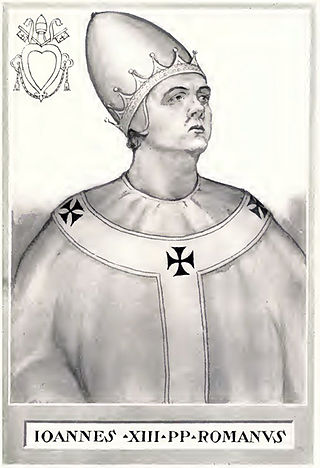Related Research Articles
The 1000s was a decade of the Julian Calendar which began on January 1, 1000, and ended on December 31, 1009.
The 830s decade ran from January 1, 830, to December 31, 839.
The 840s decade ran from January 1, 840, to December 31, 849.
The 1070s was a decade of the Julian Calendar which began on January 1, 1070, and ended on December 31, 1079.
The 910s decade ran from January 1, 910, to December 31, 919.
The 920s decade ran from January 1, 920, to December 31, 929.
The 930s decade ran from January 1, 930, to December 31, 939.
The 940s decade ran from January 1, 940, to December 31, 949.
The 950s decade ran from January 1, 950, to December 31, 959.
The 960s decade ran from January 1, 960, to December 31, 969.
The 970s decade ran from January 1, 970, to December 31, 979.
The 990s decade ran from January 1, 990, to December 31, 999.
The 1080s was a decade of the Julian Calendar which began on January 1, 1080, and ended on December 31, 1089.
The 1010s was a decade of the Julian Calendar which began on January 1, 1010, and ended on December 31, 1019.

Year 870 (DCCCLXX) was a common year starting on Sunday of the Julian calendar.

Year 1035 (MXXXV) was a common year starting on Wednesday of the Julian calendar.

Year 1074 (MLXXIV) was a common year starting on Wednesday of the Julian calendar.

Year 965 (CMLXV) was a common year starting on Sunday of the Julian calendar.

Year 975 (CMLXXV) was a common year starting on Friday of the Julian calendar.
The 1020s was a decade of the Julian Calendar which began on January 1, 1020, and ended on December 31, 1029.
References
- ↑ Halm, Heinz (2003). Die Kalifen von Kairo: Die Fatimiden in Ägypten, 973–1074[The Caliphs of Cairo: The Fatimids in Egypt, 973–1074] (in German). Munich: C. H. Beck. pp. 341–343. ISBN 3-406-48654-1.
- ↑ Tvauri, Andres (2012). The Migration Period, Pre-Viking Age, and Viking Age in Estonia. pp. 33, 59, 60. Retrieved 27 December 2016.
- ↑ Jonathan Riley-Smith (2006). The New Cambridge Medieval History, Volume 4, c. 1024–c. 1198, p. 124. ISBN 978-0-521-41411-1.
- ↑ Chejne, Anwar G. (1974). Muslim Spain: Its History and Culture, pp. 43–49. Minneapolis: The University of Minnesota Press. ISBN 0816606889.
- ↑ Moriceau, Jean-Marc (2011) L'Homme contre le loup. Une guerre de deux mille ans, Paris, Fayard.
- 1 2 "Rudolf III | king of Burgundy | Britannica". www.britannica.com. Retrieved 2023-05-14.
- 1 2 3 C.W. Previté-Orton, The Early History of the House of Savoy, (Cambridge University Press, 1912), p. 30.
- 1 2 Kelly, J.N.D., and Walsh, Michael. "John XIX." in A Dictionary of Popes, 3rd ed. Oxford University Press, 2015. eISBN 9780191795459
- ↑ Kallner-Amiran, D. H. (1950). "A Revised Earthquake-Catalogue of Palestine" (PDF). Israel Exploration Journal. Israel Exploration Society. 1 (4): 223–246. JSTOR 27924451. Archived (PDF) from the original on 2022-10-09.
- ↑ C.W. Previté-Orton, Early History of the House of Savoy, (Cambridge University Press, 1912), p. 32.
- ↑ "The Apocalyptic Dossier: 967-1033". Boston University. Boston University Center for Millennial Studies. Archived from the original on August 17, 2018. Retrieved May 7, 2017.
- ↑ Landes, Richard. "Introduction to Apocalypticism and Millennialism". Catholic Resources for Bible, Liturgy, Art, and Theology. Archived from the original on July 2, 2011. Retrieved May 7, 2017.
- ↑ "A Brief History of the Apocalypse". www.abhota.info. Retrieved 2017-05-07.
- ↑ Revelation Chapter 20
- ↑ Boyett, Jason (2005). Pocket Guide to the Apocalypse: The Official Field Manual for the End of the World. Relevant Media Group. pp. 31–32. ISBN 978-0-9760357-1-8.
- ↑ Strandberg, Todd; James, Terry (2003). Are You Rapture Ready?. New York City: Dutton. pp. 35–36. ISBN 978-0-525-94737-0.
- ↑ Norwich, John (1991). Byzantium: the Apogee, pp. 279–80. London: Penguin. ISBN 0-670-80252-2.
- ↑ Richard Brzezinski (1998). History of Poland: Old Poland, the Piast Dynasty, p. 18. ISBN 83-7212-019-6.
- ↑ Black's Picturesque Tourist of Scotland, Adam and Charles Black. Published 1861, Scotland.
- ↑ Meynier, Gilbert (2010). L'Algérie cœur du Maghreb classique: De l'ouverture islamo-arabe au repli (658-1518). Paris: La Découverte. p. 50.
- ↑ The Gesta Normannorum Ducum of William of Jumièges, Orderic Vitalis, and Robert of Torigni, Ed. & Trans. Elizabeth M.C. van Houts, Vol. I (Clarendon Press, Oxford, 1992), pp. 80-85.
- ↑ Benvenuti, Gino (1985). Le Repubbliche Marinare. Amalfi, Pisa, Genova e Venezia. Rome: Newton & Compton Editori. p. 42. ISBN 88-8289-529-7.
- ↑ Meynier, Gilbert (2010). L'Algérie, cœur du Maghreb classique: De l'ouverture islamo-arabe au repli (658-1518). Paris: La Découverte. p. 50.
- ↑ History of Song (1346).
- ↑ Parker, Philip (2010). World History. Dorling Kindersley Limited. p. 430. ISBN 9781405352574.
- ↑ Panton, James (2011). Historical Dictionary of the British Monarchy. Scarecrow Press. p. 16. ISBN 9780810874978.
- ↑ Stalls, Clay (1995). Possessing the land: Aragon's expansion into Islam's Ebro frontier under Alfonso the Battler, 1104-1134. Brill. p. viii. ISBN 90-04-10367-8.
- ↑ Richard Brzezinski (1995). History of Poland: Old Poland – The Piast Dynasty, p. 18. ISBN 83-7212-019-6.
- ↑ Constable, Giles (2008). Three Treatises From Bec on the Nature of Monastic Life. University of Toronto Press. p. 28. ISBN 9781442691629.
- ↑ "Conrad II - Holy Roman emperor". Encyclopedia Britannica. Retrieved 8 April 2018.
- ↑ McGrath, Alister E. (2013). Christian History: An Introduction. John Wiley & Sons. p. 104. ISBN 9781118337790.